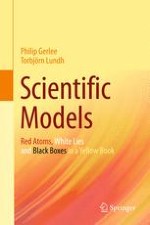2016 | OriginalPaper | Buchkapitel
Structure, Relation and Use
verfasst von : Philip Gerlee, Torbjörn Lundh
Erschienen in: Scientific Models
Aktivieren Sie unsere intelligente Suche, um passende Fachinhalte oder Patente zu finden.
Wählen Sie Textabschnitte aus um mit Künstlicher Intelligenz passenden Patente zu finden. powered by
Markieren Sie Textabschnitte, um KI-gestützt weitere passende Inhalte zu finden. powered by
